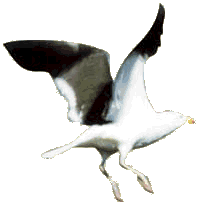Cius
From Wikipedia, the free encyclopedia
Cius – Greek Kιος, Kίος, or Kείος, also transliterated as Kios and Keios, and later Prusa, Prusias and Prusias ad Mare – was an ancient Greek city bordering the Propontis (now known as the Sea of Marmara), in Bithynia, and had as such a long history, being mentioned by Homer, Aristoteles and Strabo. It was colonized by the Milesians and became a place of much commercial importance. It joined the Aetolian League, and was destroyed by Philip III of Macedon. It was rebuilt by Prusias I of Bithynia who renamed it for himself. An important chain in the ancient Silk Road, it became known as a wealthy town. There are only few remnants of the ancient town and its harbour today. Somewhat more to the west, the new modern town of Gemlik, Bursa Province, Turkey can be found.
| CIUS (Kios.) by
the catholic encyclopaedia http://www.newadvent.org/cathen/03794a.htm A titular see of Asia Minor. Kios was a Milesian colony on the Bithynian coast in the Kianos Kolpos, a bay formed by the Propontis. It was captured by Hymeos, a general of Darius, was destroyed by Philip III, and restored by Prusias, whence its new name Prusias ad Hippum. Its episcopal see was suffragan to Prusa. Bishop Cyrillus was present at Nicaea in 325. At an early date the see was raised to a higher rank; according to Ramsay (Asia Minor, 428) Julianus, who played an important part at Constantinople and Chalcedon as apocrisiarus of Pope Leo, was Bishop of Kios, not of Kos. At the Council of Constantinople, under the Patriarch Menas, in 546 Hedistus subscrlbes as metropolitan of Cius, but this must be a later interpolation, for at the sixth and seventh Oecumenical Councils the see holds again only episcopal rank; at the Eighth General Council and as late as the twelfth century we find archbishops. Of the sixteen titulars quoted by Lequien ( I, 631) the most worthy of notice is St. Eustathius, a confessor under the Iconoclasts. Kios may be Civitot, the landing-place of the Crusaders on their way to Nicaea though this is placed by many geographers at Yalova. The Turks call it Ghemlek. It has 5000 inhabitants (4600 Greeks, 300 Mussulmans, 100 Armenians), and is the chief town of caza in the vilayet of Brusa, and also the residence of the Greek metropolitan of Nicaea. There remain yet some ruins of its ancient walls. The little haven exports chrome. |
